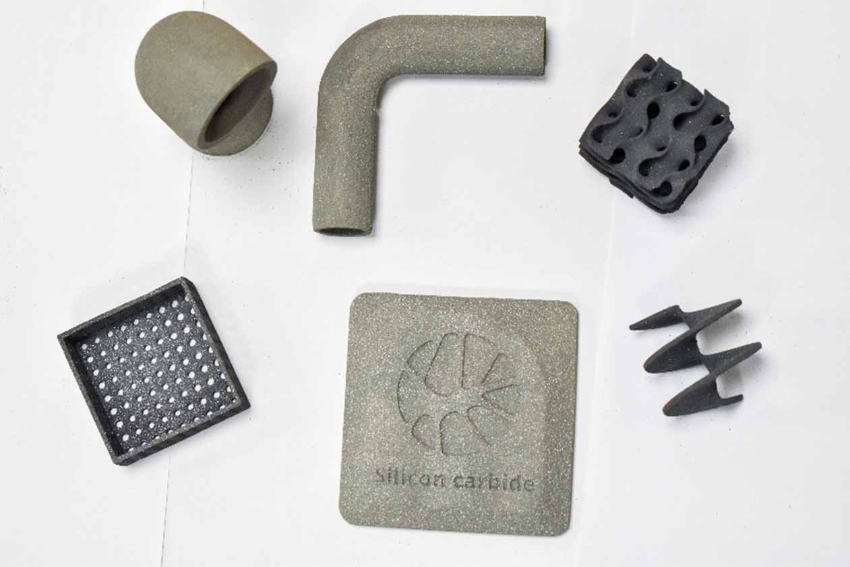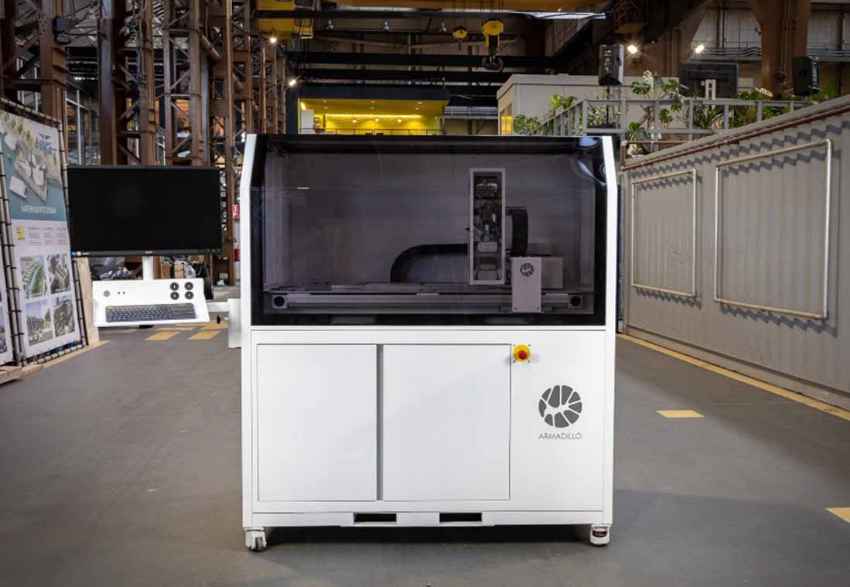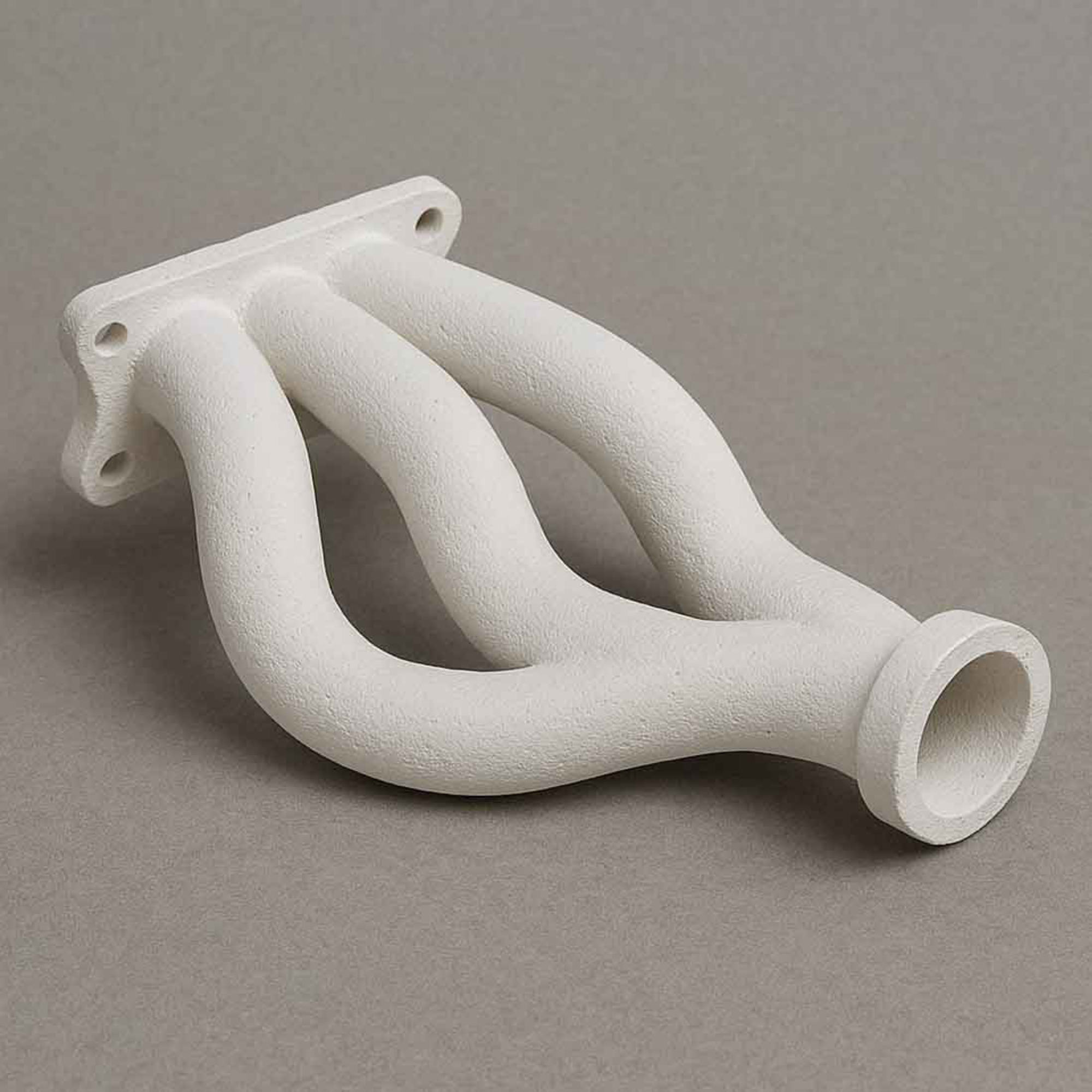Concr3de is a Dutch company specialized in advanced binder jetting additive manufacturing. Since its foundation, the company has focused on developing sustainable materials and production systems that enable circular, high-performance manufacturing. Its technologies allow 3D printing with natural, recycled, and industrial materials, minimizing waste and energy use.
Concr3de’s applications range from design and architecture, where it prints stone-like and bio-based materials, to technical and industrial solutions, including high-temperature ceramics, foundry molds, and water-washable tooling for composite manufacturing. The goal is to make additive manufacturing both ecologically responsible and industrially scalable.
Interview with Matteo Baldassari, Co- Founder of Concr3de.
What are the main areas of activity of the company?
Matteo Baldassari: The main areas of activity include:
- Additive manufacturing systems – design and production of industrial binder jet printers such as the Armadillo and Elephant models.
- Material development – creation of powders and binders for ceramics, minerals, metals, and fully bio-based systems.
- Application engineering – development of custom industrial solutions for aerospace, automotive, energy, and foundry sectors.
- Collaborative R&D – partnerships with universities and industrial groups across Europe to advance sustainable additive manufacturing technologies.
What’s the news about new products/services?
M.B: Concr3de recently launched two major developments.
First, a wood-based 3D printing system, combining natural powders such as wood, lignin, and tannin with water-based binders. This enables the creation of 100 % bio-based and biodegradable parts for packaging, design, and circular construction.
Second, the company introduced washout tooling materials for composite manufacturing. These new water-soluble ceramics can withstand autoclave curing cycles up to 180 °C, offering a sustainable alternative for producing many applications in carbon fiber, glass fiber and aramid fibers.

What are the ranges of products/services?
M.B: Concr3de offers a complete ecosystem for binder-jet additive manufacturing:
- 3D printing systems: Armadillo for R&D and pilot production, Elephant for large-scale industrial applications.
- Materials and consumables: ceramic, mineral, and bio-based powders, plus tailored aqueous and polymeric binders.
- 3D printing and R&D services: contract manufacturing, material qualification, and joint development programs.
- Process automation and software tools that ensure precision, repeatability, and scalability for industrial clients.
What is the state of the market where you are currently active?
M.B: Concr3de operates in a rapidly growing market driven by sustainability, digitalization, and lightweighting.
The aerospace and automotive industries increasingly demand lightweight, high-temperature materials for hydrogen storage and composite manufacturing. The ceramic and foundry sectors are adopting binder jetting to improve design freedom and reduce environmental impact.
In addition, the bio-based materials segment, wood, lignin, and recycled minerals, is gaining strong traction as industries seek greener manufacturing alternatives. This diverse demand positions Concr3de at the intersection of industrial performance and environmental responsibility.
What can you tell us about market trends?
M.B: Current market trends are tightly aligned with European Union strategies promoting a circular and low-carbon economy. Industries are shifting from petrochemical resins and energy-intensive casting toward recyclable, water-based, and renewable material systems.
Binder jetting is emerging as a key enabling technology because it allows high throughput, flexible material integration, and local production.
In parallel, there is a clear movement toward hydrogen energy infrastructure, aerospace decarbonization, and composite light weighting, all of which benefit from Concr3de’s sustainable material systems.

What are the most innovative products/services marketed?
M.B: The most innovative developments include:
- Washout tooling materials for producing carbon-fiber mandrels and molds that dissolve in water after curing, simplifying composite manufacturing.
- High-performance ceramics, such as silicon carbide, capable of withstanding extreme temperatures and mechanical loads.
- Fully bio-based materials, combining natural polymers and fillers like wood, lignin, and tannin, offering a sustainable alternative to fossil-based resins.
- Ongoing research in hard metals and refractory materials aims to expand binder-jetting applications into even more demanding industrial environments.
What estimations do you have for the second half of 2025?
M.B: Concr3de anticipates a strong second half of 2025, with an estimated 40 % growth in industrial equipment sales and a significant rise in material and service revenues.
Demand from the aerospace and hydrogen sectors is expected to accelerate, particularly for washout tooling.
The company also plans to scale its bio-based material line, entering new pilot projects for sustainable packaging and architectural products.
Finally, several ongoing European research partnerships will transition into commercialization phases, reinforcing Concr3de’s position as a leader in sustainable binder-jetting technologies.


